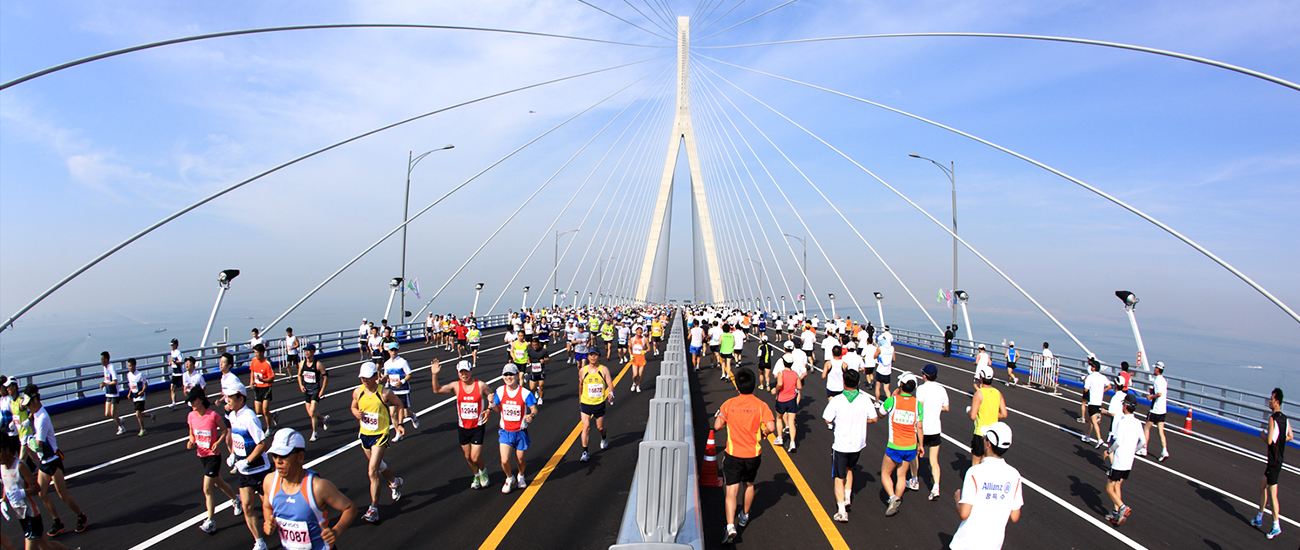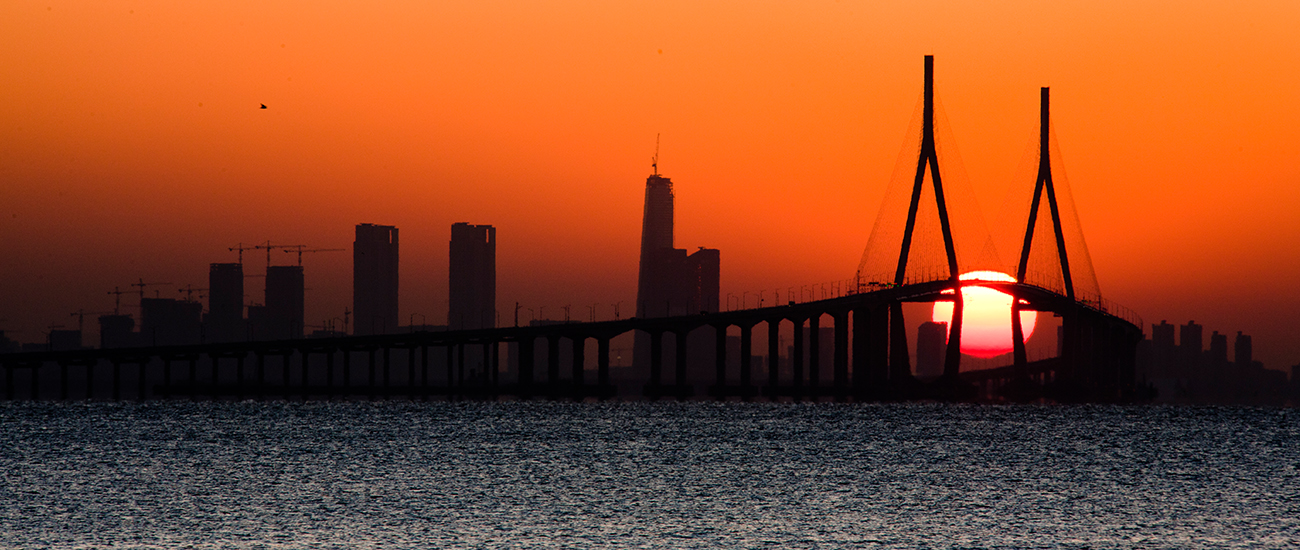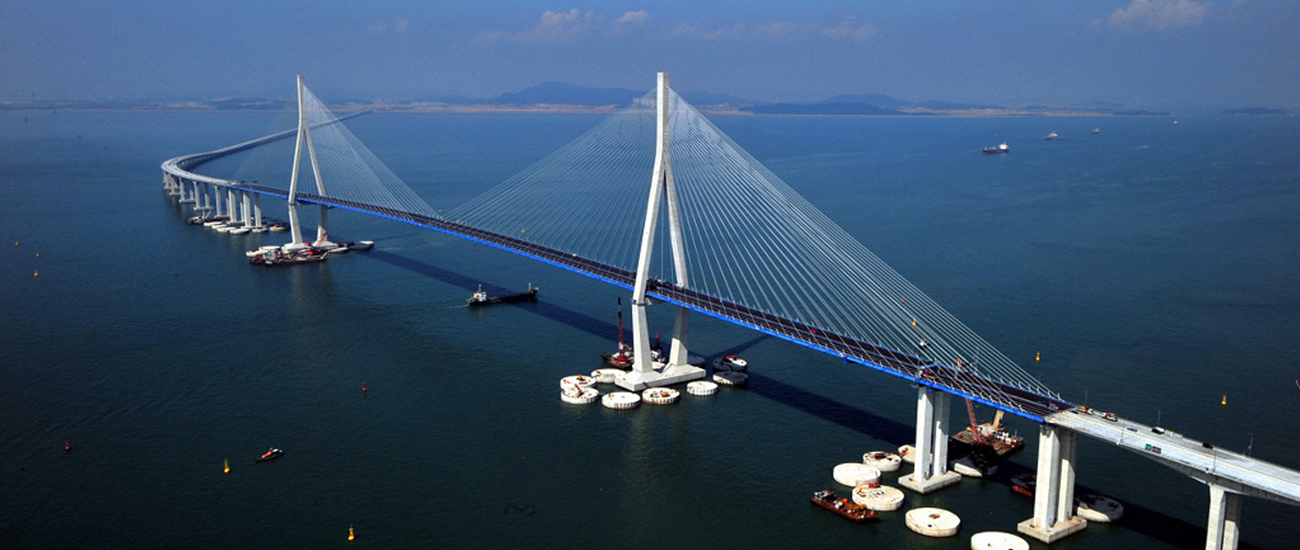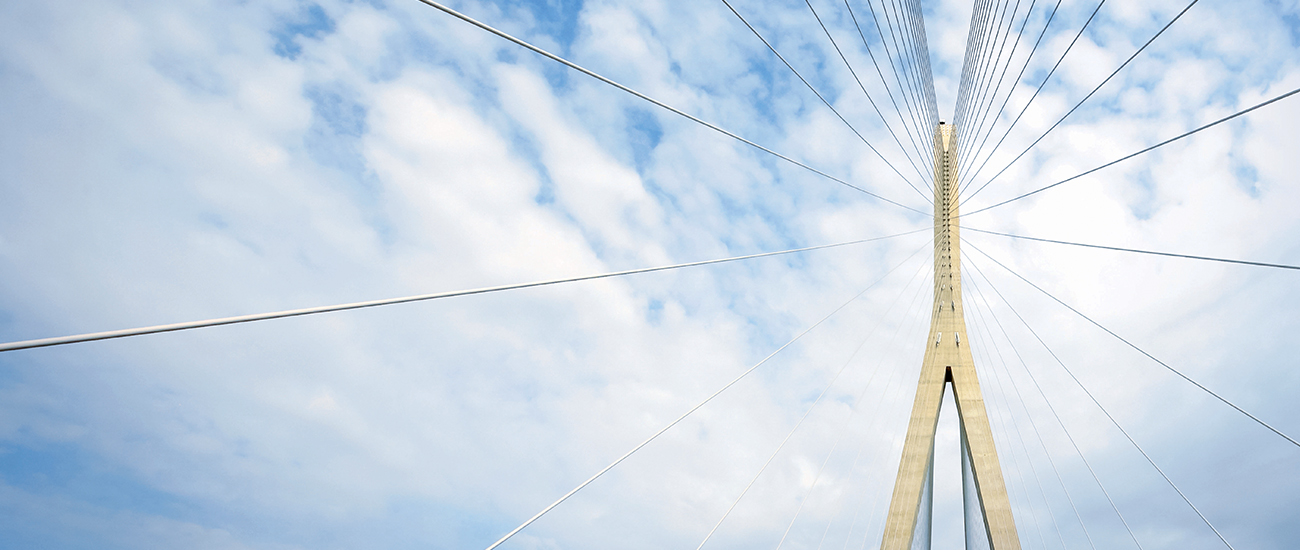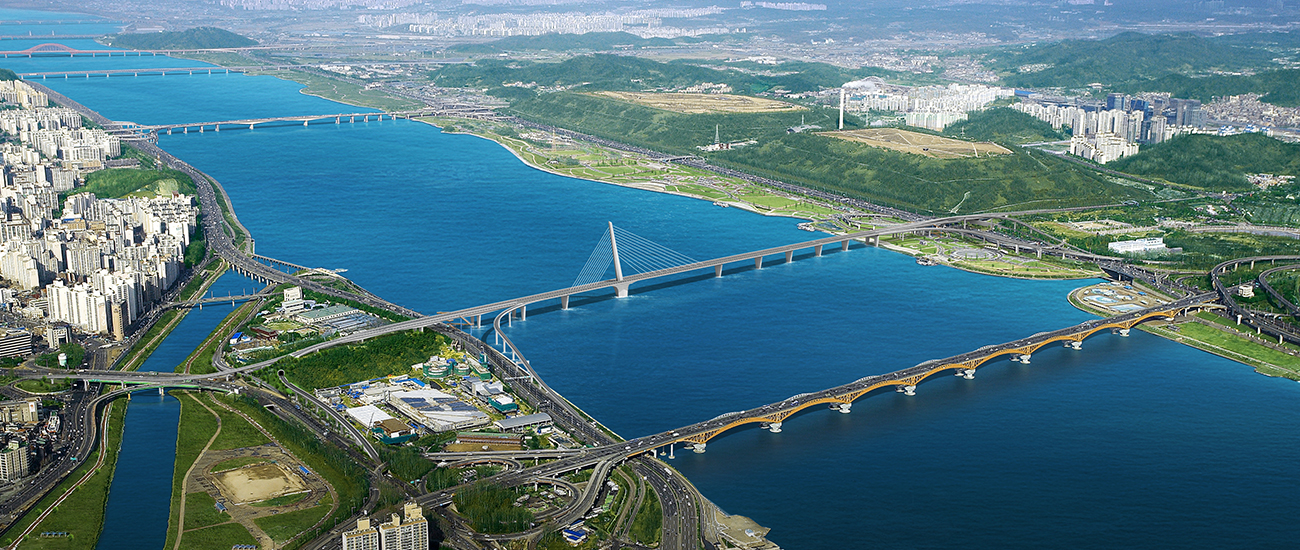On October 11 2009, the Korean city of Incheon witnessed a quite incredible sight. Some 20,000 men and women ran along the newly constructed Incheon Bridge, one of the longest cable-stayed bridges on the planet.
For the runners, the event was a once-in-a-lifetime experience. Before the bridge’s construction, only one other roadway connected the mainland to Yeongjong Island, the location of Incheon International Airport. Although that roadway was sizeable at 4.4km, the Incheon Bridge was almost five times its length.
As the race participants made their way along the new 21.4km structure, they must have had a sense that their run was tinged with significance. For engineers, the Incheon Bridge Marathon was every bit as emotional.
Myung Hyun Jung, now a supervisor at Samsung C&T’s construction group, was still a relative newcomer at the time of the bridge’s construction. “I cried while I watched the runners making their way along Incheon Bridge,” he says. “When I was first assigned to the construction effort, I wondered whether the project was even feasible. We were trying to build an incredibly long bridge in the middle of the sea. I soon became very much attached to it, however, as did all of our team. It’s a work of art that brought us all together.”
After the construction of the Incheon Bridge, travelers from Southern Seoul found themselves able to knock around 30 minutes off their travel time to Incheon International Airport.
The new bridge has also helped ease the traffic burden on the single existing route – and has become a distinctive national landmark.
Stunning Sights
Cable-stayed bridges take their name from their tower-mounted cables. Typically made of steel rope, these cables evenly distribute loads and can be used to let bridges span some very long distances indeed.
For Samsung C&T, the decision to use cable-stayed technology in the Incheon Bridge’s construction was not taken lightly. But in many instances, cable-stayed bridges have certain key factors that engineers tend to value.
In Incheon Bridge’s case, explains Kyung Lae Park, a manager in Samsung C&T’s Planning Department, aesthetic, financial and practical factors combined to make the idea of building a cable-stayed bridge more appealing.
Park explains, “One construction challenge was that the distance between the middle legs of the bridge needed to be over 600m so that ships could pass through unheeded. Generally speaking, projects such as these are then left with only 2 options for construction: cable-stayed or suspension. Building a cable-stayed bridge was the more economical solution in this case, and offered a very visually pleasing option.”
Although every construction effort poses its own unique challenges, cable-stayed bridges offer distinct advantages. Park notes, “Cable-stayed bridges do not always provide the most economical option when building bridges. However, they do perform very well over long distances and are certainly easy on the eyes.”
William Ibbs, professor of Construction Management at the University of California and President of the Ibbs Consulting Group, says, “The future of cable-stayed bridges is very bright. Designers and contractors are learning more about the technology all the time. The public finds them elegant and thus attractive. And the materials used in steel cables are getting stronger and lighter all the time.”
Many believe that few other bridge designs hold a candle in the visual stakes. Ibbs explains, “Citizens take note of a cable-stayed bridge more than conventional types, and that raises the image of the civil engineering and construction engineering professions.”
A Cable-Stayed Future?
Park says that although cable-stayed bridges have many advantages, engineers’ decisions to use this technology are made on “a case by case basis.”
That said, Samsung C&T is currently co-constructing a wide range of other cable-stayed bridges, including the Mersey Gateway Bridge in the northwest of England.
The company is also working on more Korean ventures, including the World Cup Bridge in Seoul and the Hwapo Bridge project.
The demand for bigger, longer and more attractive means of connecting land across waterways is increasing. And as needs intensify, the potential for cable-stayed bridges seems to grow by the day.


